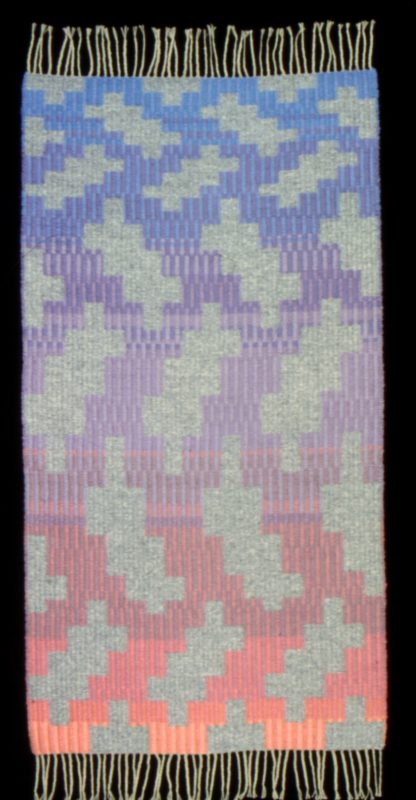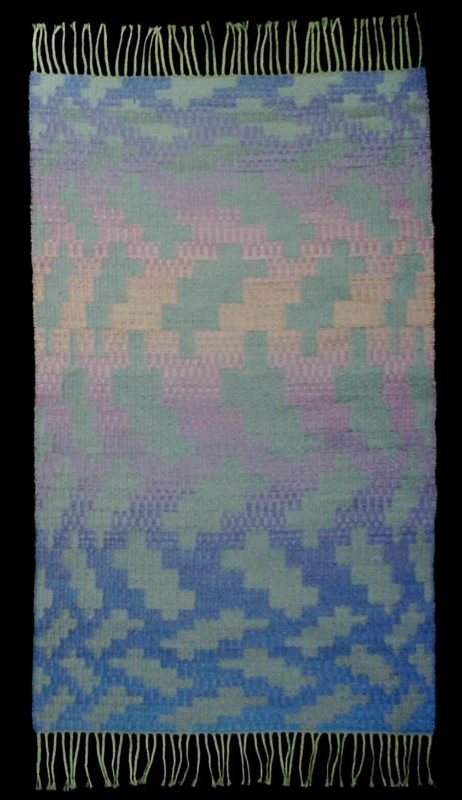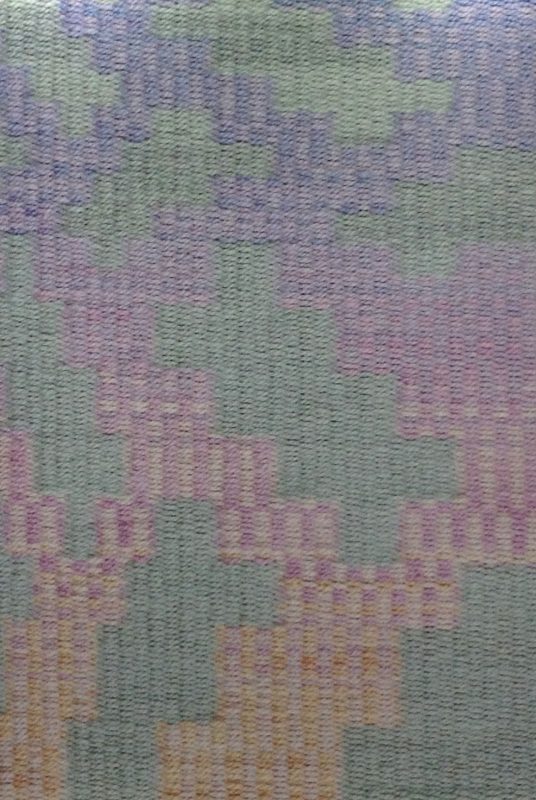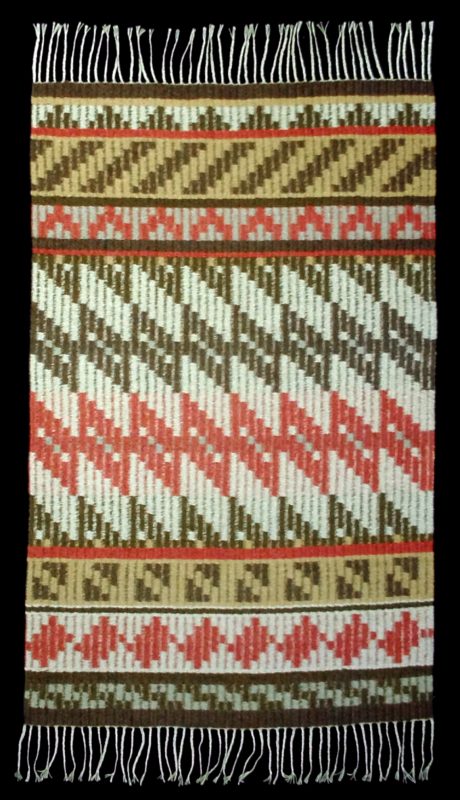This is the second in my series of occasional postings about my earlier days weaving. This blog post was originally published May 12, 2015 on my first blog site, which is no longer in existence.
We left off with my description of Taquete (or Polychrome Summer and Winter on Opposites) rugs. I wove these rugs on heavy linen warps sett 5 epi. For some rugs I used heavy rug wool that I ordered undyed. I then dyed the wool in small batches and created a whole range of colors that would blend together as I wove.

The rug pictured above is titled Plaited Rug #2, and was designed and woven in Feburary of 1988, following from the rug titled “Plaited Rug” in the previous BITD post. That first Plaited Rug was more straightforward. The blocks were all the same size, with only the colors changing. Plaited Rug #2 combines color progression creating a sense of receding space with stretching and squashing the motifs’ sizes. I exhibited this rug with the title “Flying Carpet”.
Here is a detail of that rug:

The profile draft for this rug was a straight draw, using each block twice. The design resided in the tie-up and the treadling draft followed an undulating twill. To wit:

Later that year, in December 1988, I did another one of these Plaited Rugs. The idea was pretty much the same, creating a sense of space with color blending and bending and stretching the design motif in various ways.

Here is a detail:

Here is a scanned page from my notebook showing the color gradations (which didn’t scan very well!) I used in my profile draft:

Eventually I decided that these kinds of weavings were too expensive both to make and to sell, and too cumbersome to store and exhibit.
I did some rugs with commercially dyed rug wool, and it was this one that set me on a path:

Ironically, that path was not to weave more rugs, but to weave small tapestries with cotton warps and cotton wefts. The technique, though, Taquete, would remain the same.
I called this rug Straight Draw Rug #1 (working title, not exhibition title). and it was the prototype for my method of design from quite a while after that.
More next time!







